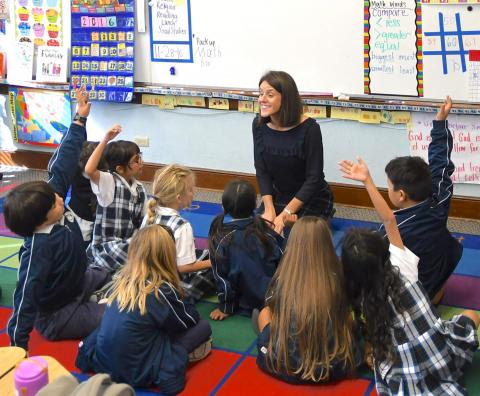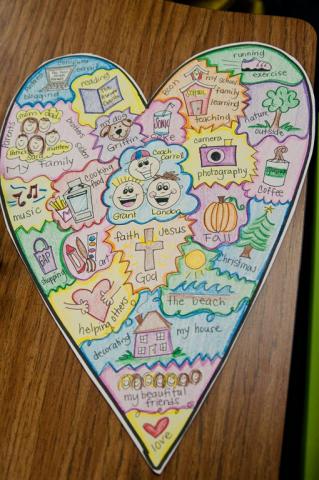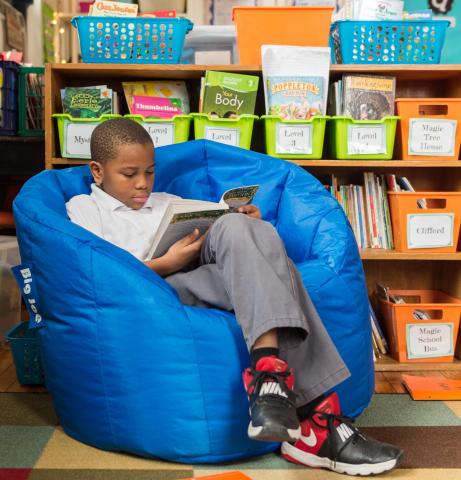7 Strengths of Super Readers Series // Belonging + Curiosity

Belonging: identifying as a valued, represented member of a larger community

Belonging to a group is a basic human need, as important as nourishment and shelter, which stresses the absolute importance of creating a classroom culture and environment where every child is (not just feels) welcomed, safe, positive, and happy. It is through attachment and belonging that kids will form positive identities as a reader within a community of readers. Children need to know that they matter before they will invest their time, energy, and sense of self in the classroom (or any other activity, for that matter). They need to have a sense of self-affirmation before they will be able to form meaningful relationships with others or connect to the larger social world. We draw on studies by Harvard University's Center on the Developing Child to emphasize the decades of research that has shown how one strong and stable relationship helps children cope with high-stress situations. In school, the most obvious and weighty relationship is that between a child and their teacher. We also draw upon research by John Bowlby on attachment theory to explain how meaningful and authentic connections to the classroom, to the teachers, and to the world of words leads to academic engagement and success in the classroom and in life. 
Strategies to Promote Belonging
We offer several concrete strategies to promote belonging in the classroom–from making heart maps (Heard, 2016), to creating digital spaces for students and families, to personalizing the classroom library. We also discuss the importance of the teacher's language. For example, choosing pronouns such as "our"(classroom library), rather than "your" or "mine" shares responsibilities in the classroom and encourages a sense of ownership for all students.
Developing a sense of belonging can also happen at home. While there are some overlaps, such as read alouds and book baskets, there are unique activities that families can engage in to ensure that children are not only improving their reading abilities but strengthening relationships with family members through literacy activities. Families can also learn more about how to do a close reading, perhaps a common practice in your classroom, to help their child deepen their understanding of and confidence with this in-school activity.
Often, a child's school success is due to opportunities to practice particular skills rather than their actual abilities. Some children have simply had more chances to practice a particular skill or strategy, which makes them appear more capable, while other children have had fewer opportunities. This becomes linked to their perceived abilities. By opening up the "black box" of school, children and families can practice literacy activities at home to help children develop and maintain a strong sense of belonging both inside and outside of school.
10 Family Routines to Promote Belonging
- Create read-aloud times that are rituals.
- Talk with your kids about your favorite and current reading material.
- Choose books to read as a whole family.
- Share the child's reading growth with grandparents and extended family (like you would celebrate accomplishments in sports or music!).
- Encourage siblings to read together.
- Have your child read aloud each evening to a pet or stuffed animal.
- Host reading celebrations at home.
- Affirm and praise small steps in your child's reading progress.
- Post-reading accomplishments on the refrigerator or wall.
- Have quiet independent reading time as a family (Unplug, tune out, and read!)
*Check out a list of texts that promote belonging on our Pinterest page.

Curiosity: fostering a willingness to explore new territory and test new theories
"Curiosity leads to invention and innovation" and "Children are naturally hungry for information." Anyone who has had the pleasure of spending time with young children has likely heard a child ask once, twice – perhaps one hundred times – "why?"
Just as curiosity helps young children to learn more about the world and their place in the world, curiosity helps children to become super readers because they enter new territories, often in a non-linear fashion, circling back, questioning their discoveries, and thirsting for more knowledge.
Strategies to Promote Curiosity
Some of the suggestions we are most likely to see in the classroom, such as a KWL chart, may feel familiar. However, after decades of teaching, thinking about a KWL chart as a way to foster curiosity, the second strength, is incredibly different from simply wanting children to learn the "right" facts about a particular topic. Lingering longer on what we (W) "want to know" by encouraging questioning and discussion may be just as important as (L) "what we learned". Understanding new facts and deepening knowledge of a topic is certainly important; yet, the benefits of becoming curious and asking questions go far beyond learning new facts and actually transforms the way a child views the world and their power to question and learn more.

Literature is at the heart of learning and the 7 Strengths. Literature not only prompts students to question, it provides an opportunity for students to work together and question their own thinking, their peers' thinking, what the author may be suggesting, and how authors are using language and literary elements. Through their sample lesson plan, Ernest and Pam demonstrate how this strength, along with the others, can be encouraged through various genres, such as poetry. Again, Pam and Ernest offer an extensive list of suggestions for families on how to promote curiosity at home–from neighborhood walks to creating a "curiosity window" to visiting the library and finding the answers to a question. Each suggestion is essentially free of monetary expenses and encourages creativity, using materials that can be found in most homes, and taking advantage of free resources in the community, such as the local library.
*Check out a list of texts that promote curiosity on our Pinterest page.
Happy Reading,
Ernest and Jodene
*Learn more about the 7 Strengths of a Super Reader in Ernest and Pam's book and at the Lit World website.
